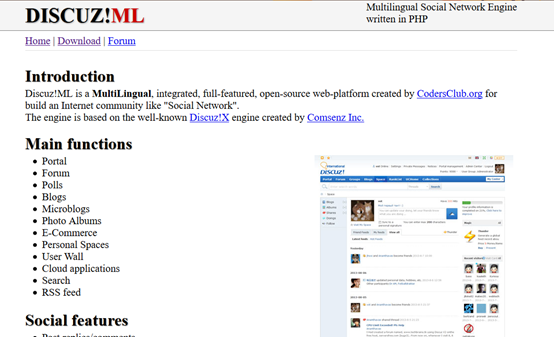Django是Python世界最有影响力的web框架。
DjangoUeditor是一款可以在Django应用中集成百度Ueditor HTML编辑器的插件(Ueditor HTML编辑器是百度开源的在线HTML编辑器)。
DjangoUeditor插件上存在一个漏洞,可以导致任意文件上传。
影响版本 DjangoUeditor < 1.9.143
漏洞分析 最近在学习分析python web框架方面的漏洞,恰好看到了WooYun 上2015年的一个关于DjangoUeditor的漏洞,就拿来分析一下。
不要看这个漏洞距今已经快两年了,笔者认为这个漏洞还是有分析的价值的,因为DjangoUeditor作为一个由百度开发的富文本编辑器Ueditor移植到Django中的组件,它的使用率还是挺高的;再者,DjangoUeditor于2015年1月17号后,再也没有更新过,见github上作者的说明:
经笔者测试,现在可以下载使用的1.9.143版本中,依然存在着这个漏洞。因此这个漏洞依然有着一定的影响的。
下面开始正式分析下这个漏洞,根据wooyun上的说明,可以在利用这个插件进行上传图片时,改变imagePathFormat变量的值,即可上传任意文件。
搭建好环境后,来看一下后台的样式,如下图所示
我们来传一张图片并抓包看一下,如下图所示:
注意图中两处红圈处,其中一处便是wooyun中提到的imagePathFormat参数,另一处action参数,这个参数在下文中会用到。
可以看出,当上传一个图片(或者是文件)时候,POST提交的路径是/ueditor/controller/,我们看看DjangoUeditor的路由怎么定义的,来看一下后台代码DjangoUeditor/urls.py
1 2 3 4 5 6 7 8 9 10 11 from django import VERSIONif VERSION[0 :2 ]>(1 ,3 ): from django.conf.urls import patterns, url else : from django.conf.urls.defaults import patterns, url from views import get_ueditor_controllerurlpatterns = patterns('' , url(r'^controller/$' ,get_ueditor_controller) )
从urls.py中可以看到,路由定义到views.py中的get_ueditor_controller方法上去了
1 2 3 4 5 6 7 8 9 10 11 12 13 14 def get_ueditor_controller (request ): """获取ueditor的后端URL地址 """ action=request.GET.get("action" ,"" ) reponseAction={ "config" :get_ueditor_settings, "uploadimage" :UploadFile, "uploadscrawl" :UploadFile, "uploadvideo" :UploadFile, "uploadfile" :UploadFile, "catchimage" :catcher_remote_image, "listimage" :list_files, "listfile" :list_files } return reponseAction[action](request)
传入的action参数值是uploadimage,因此接下来return进入对应的UploadFile方法
跟到UploadFile方法中看一看(已省略中间若干代码)
1 2 3 4 5 6 7 8 9 10 11 12 13 14 15 16 17 18 19 ef UploadFile(request): """上传文件""" 。。。。。。。。。。。。。。。。 upload_path_format={ "uploadfile" :"filePathFormat" , "uploadimage" :"imagePathFormat" , "uploadscrawl" :"scrawlPathFormat" , "uploadvideo" :"videoPathFormat" } path_format_var=get_path_format_vars() path_format_var.update({ "basename" :upload_original_name, "extname" :upload_original_ext[1 :], "filename" :upload_file_name, })
注意最后一行,在这里调用了一个get_output_path方法来获得输出文件路径以及各式话后的文件名。
为什么要注意这个get_output_path方法呢?回想一下,这个漏洞注入点是什么?是imagePathFormat参数,这里传入get_output_path方法的第二个参数upload_path_format[action]值是什么?见下图。
当action参数值是uploadimage时,upload_path_format[action]值为 imagePathFormat,imagePathFormat将作为第二个参数的值进入get_output_path方法。
接下来跟进get_output_path方法
1 2 3 4 5 6 7 8 9 10 11 def get_output_path (request,path_format,path_format_var ): OutputPathFormat=(request.GET.get(path_format,USettings.UEditorSettings["defaultPathFormat" ]) % path_format_var).replace("\\" ,"/" ) OutputPath,OutputFile=os.path.split(OutputPathFormat) OutputPath=os.path.join(USettings.gSettings.MEDIA_ROOT,OutputPath) if not OutputFile: OutputFile=USettings.UEditorSettings["defaultPathFormat" ] % path_format_var OutputPathFormat=os.path.join(OutputPathFormat,OutputFile) if not os.path.exists(OutputPath): os.makedirs(OutputPath) return ( OutputPathFormat,OutputPath,OutputFile)
现在path_format的值为imagePathFormat,django中的request.GET.get()方法可以跟两个参数,如果get中可以取得第一个参数的值,则使用第一个的值,如果取不到,则使用第二个配置到的默认值。经过处理后OutputPathFormat的值为uploads/images。
接下来用os.path.split来将路径和文件名分割,然后分别赋值给OutputPath,OutputFile
下面就到了漏洞存在的地方了,往下看,下面会判断OutputFile是否为空,为空的话就用标准模板进行格式化,我们这里OutputFile显然为空,最终的文件名会返回一个格式化的名字,如下图
具体格式化方法如下:
1 2 3 4 5 6 7 8 9 10 def get_path_format_vars (): return { "year" :datetime.datetime.now().strftime("%Y" ), "month" :datetime.datetime.now().strftime("%m" ), "day" :datetime.datetime.now().strftime("%d" ), "date" : datetime.datetime.now().strftime("%Y%m%d" ), "time" :datetime.datetime.now().strftime("%H%M%S" ), "datetime" :datetime.datetime.now().strftime("%Y%m%d%H%M%S" ), "rnd" :random.randrange(100 ,999 ) }
但是,如果我们构造的imagePathFormat参数中的值不是一个单纯的路径,而是一个包含文件名的参数呢?(如imagePathFormat = uploads%2Fimages%2Fhehehe.xxxx)
显而易见,OutputFile就是我们构造的hehehe.xxxx。
验证如下
经验证,写入的路径也是可以控制的,不仅限于images路径,并且可以覆盖其他的文件。
### 修补防御
可以通过修改代码,对用户上传的OutputFile类型进行过滤,只允许符合要求的类型进行上传。











